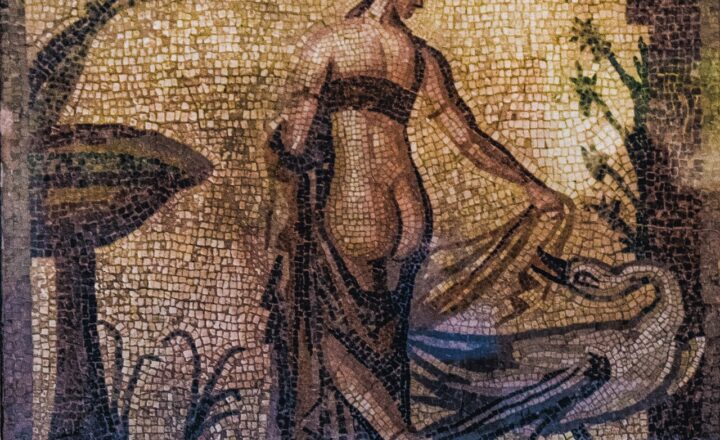How Stone Circles Like Stonehenge Became Mystical Icons of Ancient Cultures
November 17, 2024

Stone circles have captivated the imagination of scholars, archaeologists, and enthusiasts for centuries. Among them, Stonehenge stands as a colossal testament to the ingenuity and spiritual beliefs of ancient civilizations. This article will delve deep into how stone circles like Stonehenge became mystical icons, exploring their historical significance, construction methods, astronomical alignments, cultural importance, and enduring legacy.
today, the mention of stone circles often evokes images of mystical rituals and ancient cosmic events. But behind these perceptions lies a complex history that explains how such structures emerged and why they are still revered today.
1. The Historical Context of Stone Circles
The origins of stone circles date back to prehistoric times, with evidence of their construction in the Neolithic and Bronze Ages, around 3000-1500 BCE. Although they can be found across various parts of the world, including Europe, North America, and parts of Asia and Africa, the most famous examples are those found in the British Isles, particularly Stonehenge in England and the Callanish Stones in Scotland.
Stone circles served various purposes in ancient societies, including:
- Ceremonial and Ritual Spaces: Many scholars believe these structures were integral to communal rituals, possibly for agricultural cycles, seasonal changes, or celestial events.
- Burial Sites: Some stone circles functioned as grave markers or burial sites, reflecting the societal belief in life after death and the spiritual connection with ancestors.
- Astronomical Observatories: They are often aligned with celestial events such as solstices and equinoxes, suggesting a sophisticated understanding of astronomy among ancient peoples.
Understanding the historical context of these structures provides insight into the societies that built them and their motivations.
2. The Construction of Stone Circles
Building stone circles required immense skill and effort, utilizing resources available in the surrounding landscape.
**Materials:**
– The stones themselves were often local granite or sandstone, transported from significant distances in some cases.
**Techniques:**
– Early builders used primitive tools, but they displayed remarkable ingenuity in moving and erecting massive stones weighing several tons.
**Community Effort:**
– Constructing a stone circle was not just a task for a few individuals but a monumental community effort, highlighting the social cohesion and collective purpose of these societies.
Additionally, theories suggest that stones were rolled on logs or dragged over sledges made of wood to transport them. This logistical feat involved advanced planning and organization, indicating a strong social structure and shared beliefs in the significance of these structures.
3. Astronomical Significance of Stone Circles
Many stone circles exhibit a deliberate alignment with astronomical phenomena. For instance, Stonehenge’s alignment with the summer solstice sunrise and the winter solstice sunset speaks to the builders’ keen observations of celestial cycles.
**Calendar Functions:**
– By observing the rising and setting sun, ancient societies could keep track of seasons, which was crucial for agriculture, hunting, and gathering.
– The placement of stones likely was intended to function as a calendar, guiding agricultural practices and societal events.
**Cultural and Spiritual Links:**
– Celestial alignments also elevated the spiritual importance of stone circles, intertwining the physical and metaphysical realms.
This connection to astronomy reinforced the mystical significance of these structures, making them focal points for community gatherings and rituals.
4. Cultural Symbolism and Spiritual Beliefs
Stone circles are often shrouded in folklore and myth, adding to their status as mystical icons. Different cultures attributed various meanings and functions to these circles, illuminating their spiritual and cultural symbolism.
**Ritual Practices:**
– Stone circles served as sites for rituals related to fertility, harvest, and even healing. They brought communities together, strengthening social bonds.
**Mythology:**
– Many ancient societies created myths surrounding the circles—some believed them to be portals to the gods or places of prophecy.
These entrenched beliefs reveal how stone circles manifest the values, fears, and aspirations of the societies that constructed them, shaping their identity and worldview.
5. The Enduring Legacy of Stone Circles
Today, stone circles like Stonehenge continue to attract tourists, scholars, and spiritual seekers. They symbolize humanity’s connection to the past, providing insight into the lives, beliefs, and rituals of ancient cultures.
**Historic Preservation:**
– Efforts to preserve and protect these sites illustrate the continuing value placed on them in contemporary society.
**Cultural Festivals:**
– Modern cultural festivals and solstice celebrations held at sites like Stonehenge reflect a reinterpretation of ancient practices, blending history with contemporary spiritual expression.
These ongoing traditions show how stone circles still inspire awe and reverence, bridging the ancient and modern worlds, and fostering a sense of continuity through time.
Conclusion
Stone circles, including the iconic Stonehenge, encapsulate the intersection of history, astronomy, spirituality, and community. They offer a powerful glimpse into the lives and beliefs of those who constructed them, demonstrating how they have evolved into symbols of ancient wisdom and cultural significance.
As we reflect on these ancient structures, we are reminded of the shared human experience that transcends time and culture, uniting us in a quest for meaning, connection, and understanding in an ever-changing world.







